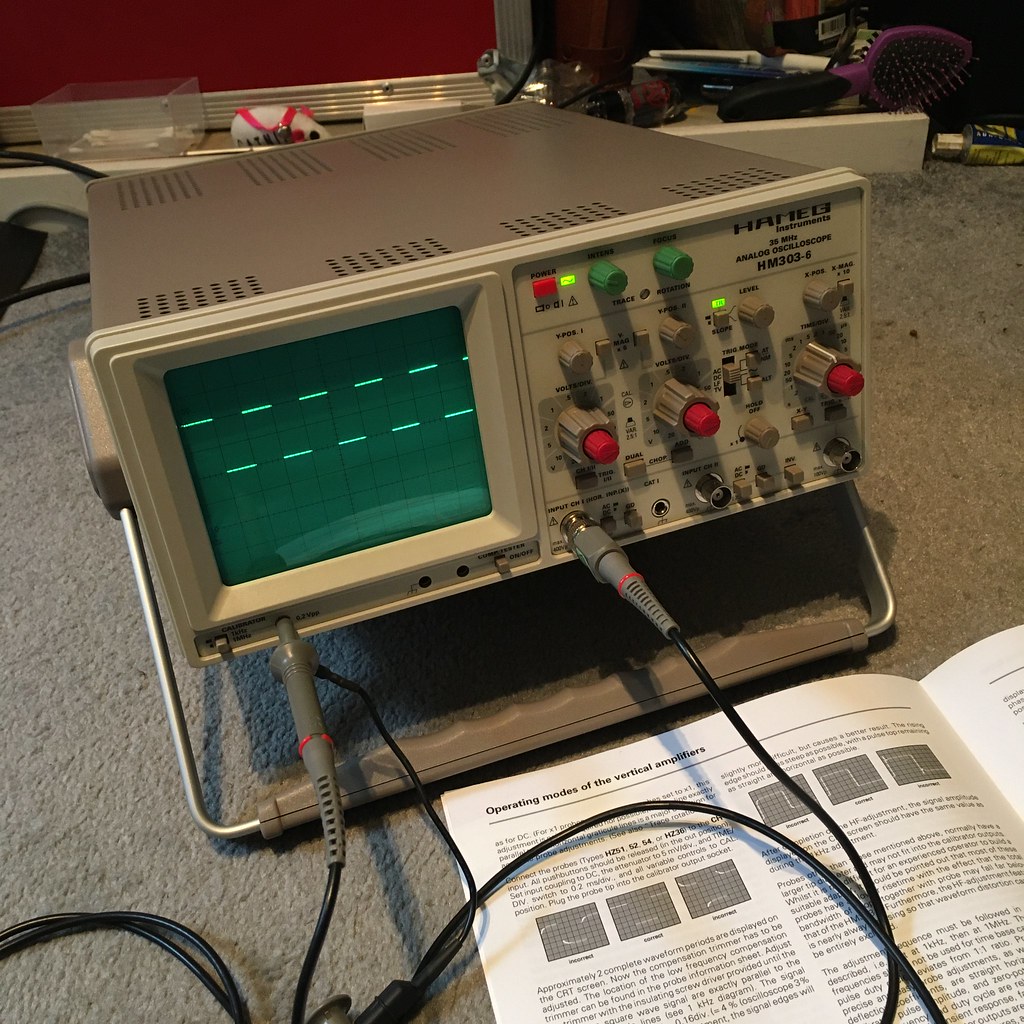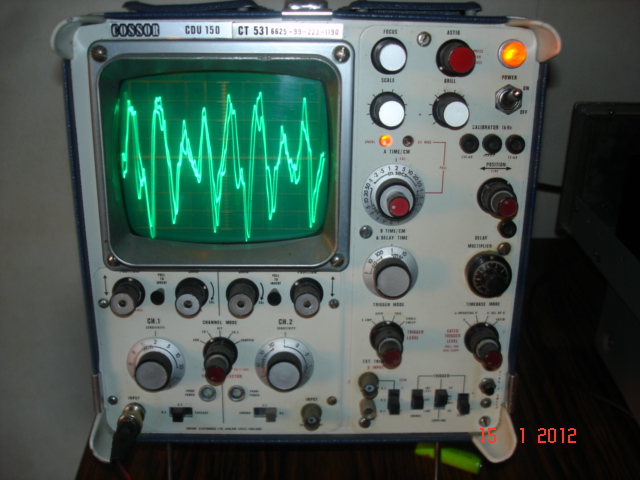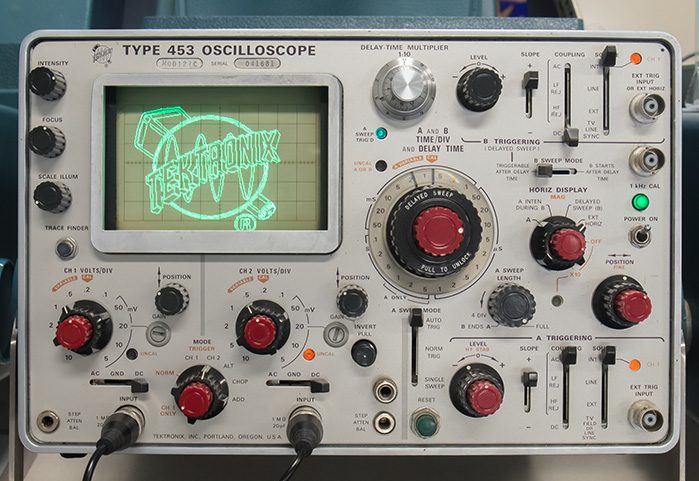a.palfreyman
pfm Member
Yes, wot Shadders said.You've left me on that one.... is that not what I said?
AP
Yes, wot Shadders said.You've left me on that one.... is that not what I said?
However he is really busy and I don't know if I want to impose. Anything in London to learn some repair skills for us? Must be a useful life skill!
I’ve just bought myself an oscilloscope. The world should be very afraid.
It's the soldering iron that worries us!... :-]
I’ve absolutely no interest in designing or modifying anything, so really all I want to build up to is to be able to service existing well documented stuff a little better. I’m hoping to learn to use the scope to better understand amplifier bias, distortion etc, help fault-find old 8 bit computers etc (check I/O to various chip legs etc).
PS Its a Hameg HM303-6
Scopes like the Hameg can be very useful. Do you also have some x10 probes?
@Tony L
In that case you'll be wanting to look at Tektronix' classic application note 'XYZs of Oscilloscopes'
I think it's the best primer on using a 'scope there is - assumes little knowledge and a model of clarity in technical writing in explaining how to learn to exploit what even a simple 'scope' can deliver. You can download the current version here:
https://www.tek.com/document/primer/xyzs-oscilloscopes-primer
Two potential snags with the above.
1) Being good as someone who can repair and/or design and build doesn't mean someone can teach well.
2) The big responsibility when it comes to teaching a subject like practical electronics is the safety aspect. If you teach someone you take on responsibility for this, and if something goes wrong the injured student - or their family/lawyers or police may come knocking on the door of the teacher.


Got my scope! Astonishingly it survived the utter bell-end from Hermes not ringing the door bell, not using the door knocker, and actually deciding to throw it over the back wall into the yard where it landed on a pile of bricks. It just reinforces my view that Hermes really are the worst of the lot and by some considerable margin. They really do employ some useless brainless shit! At least the dick head threw it in my yard, not the neighbours as has happened before.
Anyway, the seller packed it very well and it is surprisingly light so survived without any evidence of damage inside or out (it actually looks pretty much new). I get the impression this is a very late-period CRT scope, it certainly weighs but a fraction of the ‘80s Tektronics we use at the museum, and there is very little inside with a switch-mode PSU and a lot of surface mount stuff. No sign of bulging or leaky caps and all knobs seem to work ok as far as I can tell. Yay! I have a scope!
Those are negatives!
Theoretically I agree, and I did think very long and hard about what to go for. I’d love a real high-end vintage Tek or something similar (a big valve one!) but I clearly don’t have the skillset to fix or restore an oscilloscope. My main priority at this point was something perfectly working so I can learn. I also wanted an analogue CRT scope as whilst I recognise the advantages of modern high-bandwidth digital scopes they are just too menu-driven and filled with way too many options for a beginner IMO. A while back three of us at the museum (the other two being competent retired electronics engineers) really struggled to figure out some Chinese LCD storage scope someone brought in, just baffling degrees of complexity with menus and settings everywhere. As such I wanted a basic late-period CRT scope in as close to NOS condition as I could find and this fits the bill pretty well I suspect. It should be a good ‘starter scope’ and still fast enough to work on old 8 bit computers etc.

I used a Tektronix digital scope with a CRT screen a few years ago at a customers premises - I hated the way that the level changed perceptibly after you had probed the signal and that it couldn`t show the difference between a TTL low and a ground short. I didn`t feel I could trust what I was seeing and reverted to a 475 I found lying around at the back of their workshop.
My everyday scope is a 2215, does the job though not as good as a 465 - which I also have but needs attention, which is time.....

That`s a modern Cossor - I learnt on a 1035 :- https://www.worthpoint.com/worthopedia /vintage-cossor-1035-oscilloscope-16811240
It was full of EF50s Tony.....
My Dad had a proper valve Tektronix, a 546 but I think he passed it on to my nephew. It was quite noisy and in the summer rather warm - basically a 600 watt fan heater.
